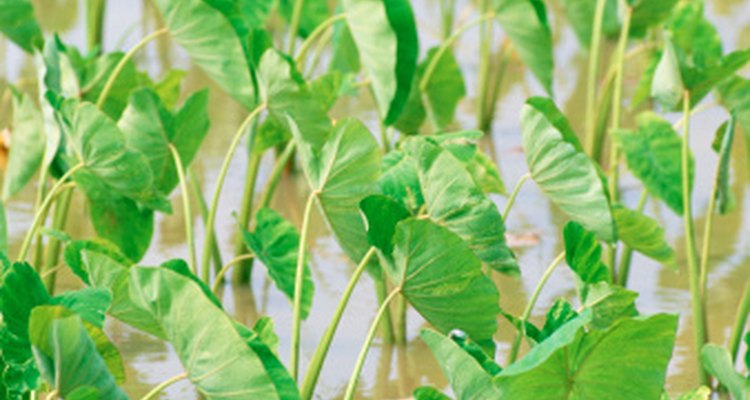
Taro is the common name for a number of plants in the Araceae family. It is native to southeast Asia, and is now found throughout the tropics, growing in wet climates across Oceania. It is served in a variety of ways, most notable in Hawaii in a mashed form called “poi.” Many of its parts are eaten, especially the roots and the corms, or bulbous roots. It is known for its pungent, nutty flavor and the fact that it has loads of vitamins, minerals and other nutritional benefits.
Taro or Eddoe
Colocasia esculenta, commonly called taro or eddoe, is the most well-known form of taro, and is considered to be the “true taro.” It grows throughout the tropics, particularly in humid and rainy climates in the Pacific. The plant grows to 3 or 4 feet tall, while also growing edible roots reaching a foot deep. This form now grows across Asia, Africa and the Pacific, and is essential to many Oceanic and Asian diets. It is believed to be one of the earliest cultivated crops in humanity's history.
Other Taros
There are other plants that are related to taro and are often eaten in a similar manner. Alocasia is a tarolike plant, which is most commonly eaten in Samoa, Tuvalu, Tonga and the Cook Islands. In addition to the leaves and roots, the starchy stem of Alocasia also is eaten, but is not preferred and only eaten when other foods are not available. Cyrtosperma, most commonly known by its Tuvalu name pulaka, is a large plant with massive leaves and coarser roots. It grows well in atolls and is sometimes called giant taro or swamp taro.
Taro Roots or Corms
Taro roots and corms can be cooked through boiling or roasting, and it is best to do this with the skin on to retain all the vitamins and minerals found in the plant. The roots and corms contain calcium oxalate, which can irritate the mouth and throat and even damage the kidneys if not removed from the taro, so cooking properly is essential. The roots and corms of taro are full of carbohydrates and fiber. More importantly, the roots are a source of iron and calcium, two important minerals hard to find in other parts of Pacific cuisine.
Taro Leaves
Taro leaves of many species can be eaten, but leaves from the Colocasia esculenta plant should only be eaten if the stems are green or pink. The leaves must be boiled in order to remove the calcium oxalate, which can make the mouth and throat hurt if not properly cooked. They should be cooked fresh. Taro leaves are full of a number of vitamins necessary for good health, including vitamin A, vitamin B1 (thiamin), vitamin B2 (riboflavin) and vitamin C. It is recommended that taro leaves be eaten with fatty foods to allow the body to absorb and process the vitamin A better.
Related Articles
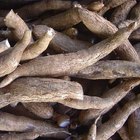
How to Cook Yucca Root

Burdock Root for Acne

How to Boil Beetroot

Uses of Cassava Flour

Baby Spinach Vs. Spinach
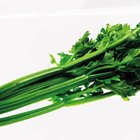
Can You Juice Celery Leaves?
How to Cook Brussels Sprout Greens

What Are the Benefits of Persimmons?

Can Herbs Flush Cellulite?

How to Cook Mixed Greens

Essential Enzymes for Hair Growth

How to Use Lettuce for Hair Growth
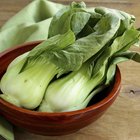
Bok Choy Nutrition
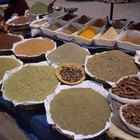
Nigerian Herbs & Spices
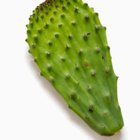
How to Cook Cactus Leaves
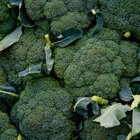
Vegetables That Are Considered to Be ...

Wild Yam for Hair Growth
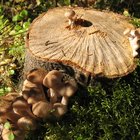
Mushrooms Found in Northern Michigan
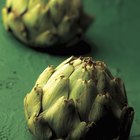
How to Parboil Artichokes
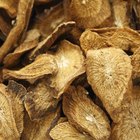
Burdock Root for Hair
References
Writer Bio
Cassandra Mathers has been writing for eHow since 2009. She graduated summa cum laude from Dartmouth College, earning a B.A. in Middle Eastern studies and anthropology. She also holds an M.A. in political science from the University of London and is finishing her Ph.D. in Islamic anthropology. She specializes in religion, politics, culture and Islam.
Photo Credits
Thinkstock Images/Comstock/Getty Images